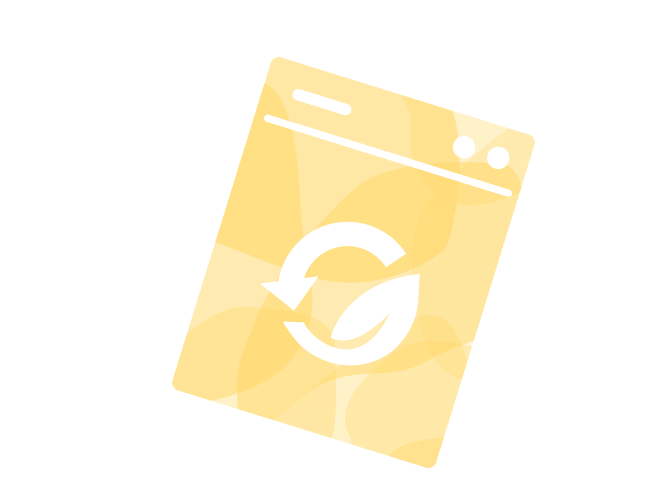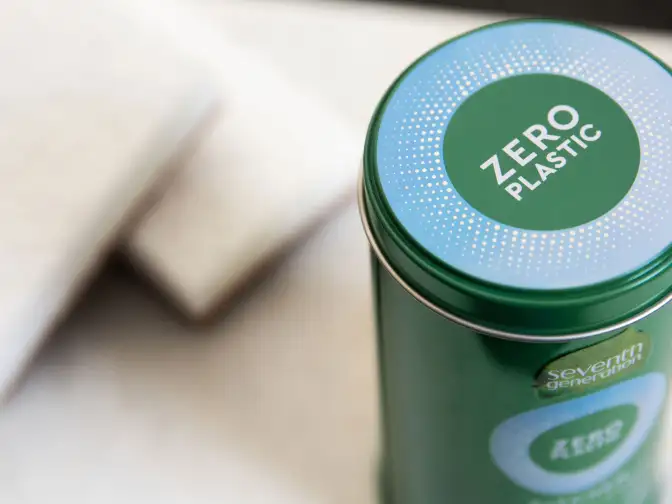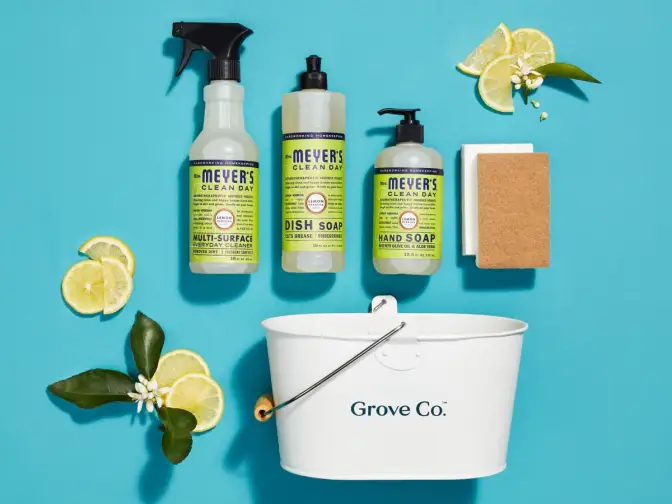Use a cool, relaxed wash
Wash clothes in cold water on a low to moderate cycle, such as gentle or permanent press, which leads to far less lint buildup than intense heat and movement.


Last Updated: April 21, 2021
Don’t let lint ruin your perfect outfit. We’ve got quick tips for removing lint in a flash and preventing lint in the wash — all without using disposable lint rollers.
We’ve all been there: running late to the party, half out the door, only to realize your clothes are covered in little, conniving bunches of lint. The lint roller would be an option, if it wasn’t empty — and you weren’t trying to be more eco-friendly this year. What do you do? And how can you prevent this headache in the future?
We’ve got your back ... and the rest of your wardrobe covered. After you read this short guide, you’ll have your lint problem sustainably solved in no time.
Most lint is made up of tiny fibers from our clothes, scraped loose through everyday wear-and-tear. Lint tends to clump together due to static cling, meaning you’ll see it most often after doing the laundry. Only some clothing fibers create lint, mainly cottons and polyesters. Spandex and lycra are more lint resistant because of their elastic fibers.
Lint is defined by Merriam Webster as "fuzz consisting especially of fine ravelings and short fibers of yarn and fabric." Livescience.com also describes lint as "... the accumulation of fibers that slough off clothing, linens and other textiles." So basically, in everyday terms, lint is little pieces of your clothing that come off from friction or washing and gather together to make white specks or pills on your clothes or a big grey cloud in your dryer's lint trap.
There are tons of ways to prevent lint buildup during routine washing and drying. The main thing to keep in mind is that lint loves friction, static, and heat. If you can prevent all three of these offenders, lint will generally avoid your wardrobe.
Here are some laundry tips and tricks for keeping your clothes lint free.
Wash clothes in cold water on a low to moderate cycle, such as gentle or permanent press, which leads to far less lint buildup than intense heat and movement.
Place heavier fabrics and clothes with buttons and zippers in a separate load. Buttons and zippers naturally cause friction during washing and drying, and when they come into contact with more delicate garments, it leads to more lint.
If you have a blanket or sweater you know produces a lot of lint, wash it separately from everything else. Never wash your towels, which are notorious lint-producers, with your clothing.
The dryer is where most lint is formed — heat, friction, and static are in full force. Line drying avoids all three, and it saves energy, too! If you can’t line dry all your clothes, at least consider line drying thinner garments to avoid the heavy sweater lint traps.

Short answer: Yes. If you’ve got the time, another round in the washer or dryer is a surefire way to shake off most of the lingering lint.
Since the lint-covered clothes are already clean, you can omit detergent and stick to a normal or light wash cycle, and if they’re already dry, run a cool, delicate cycle in the dryer.
Just remember not to put any big-time lint-shedders back in the rewash or the dryer with your lint-prone duds!

At Grove, we want to be part of the solution, not the problem. We believe using plastic isn’t sustainable — period. Now it's time for you to take action too.
Over the next five years, we're removing plastic from every product we make and sell, like Seventh Generation natural household products. We’re committed to rethinking our products, transitioning our packaging, and leading our industry with full transparency.
This is especially effective for garments you know are lint-shedders or lint-magnets. Washing these clothes inside out helps to keep lint contained, keeping it from shedding to your entire laundry load.
Another fantastic use for distilled white vinegar is in the wash. Similar to a fabric softener, distilled white vinegar prevents static cling and helps soften up clothes and blankets. It also acts as a natural cleaner and whitener, tackling odd odors and stains naturally.
Simply pour one cup of distilled white vinegar into your washing machine’s rinse cup — or dump it directly into the load during the rinse cycle.
Often underused or forgotten, the “air-only,” “air dry,” or “air fluff” setting on your dryer is perfect for grabbing lint without overdrying clothes and wasting electricity.
Because the air-only cycle uses unheated, room-temperature air, it’s perfect for shaking off lint and drawing it toward your dryer’s lint screen.
Of course, incorporating a dryer sheet into your laundry routine will help reduce lint and soften up clothes. But did you know that dryer sheets are great lint magnets even outside of the dryer?
Grab a laundry sheet and rub your lint-laden clothes with it, as you would a lint roller. After a few passes, your clothes should be lint-free. Check out Grove’s selection of dryer sheets for a non-toxic, compostable variety that won’t stink up your air or clog the landfill.
Learn more dryer sheet tricks from Dr. Clem Choy, Scientific Formulation Expert at Grove.

Wondering who Grove is, what types of products we offer, and how to get a free gift set when you sign up? Learn more about flexible monthly shipments, customizing your shipment, and joining millions of happy households — no monthly fees or commitments required.
Natural solutions are often the best remedies to a problem. The famed pumice stone is more than just a natural skin exfoliator. Due to its abrasive texture, it makes for an excellent lint-remover. Simply rub a pumice stone against lint-covered clothes, and watch the lint fall off willingly and easily.
For high-quality, non-washable clothes like cashmere and silk, or for your favorite wool coat, a cloth brush is a must. Cloth brushes usually have a wood handle and bristles of horse or boar hair, making them natural — but not vegan.
With a light, gentle brushing in one direction, a cloth brush lifts lint, dirt, and dust off those delicate closet centerpieces. You can be much more commanding on your heavy wool peacoat or corduroy pants, even using scrubbing or sweeping motions if that’s what works for that particular piece.
We’re not biased or anything, but we love this eco-friendly lint cloth brush for its look and its functionality. This no-waste lint brush has two sides: the fabric side effectively removes fine lint, dust, dandruff, and light pilling. On the other side, rubber bristles pick up larger lint and debris, and hair.
If you’re short on time, or extra-big on lint, your hair dryer is a handy tool that makes it quicker and easier to remove lint.
Hang the piece on a hanger, set your hair dryer to the cool setting, and turn it on high. While one hand brushes the piece with a dryer sheet, pumice stone, or cloth brush, use the other hand to maneuver the blow dryer in a way that sends stubborn lint into the ether.

No laundry problem is too big or washing conundrum too perplexing with a little support from our Hamper Helper guides. From how to handle down pillows to the secret behind ridding athletic gear from any lingering funkiness, our tips and tricks will help make laundry day's toughest tasks a thing of the past.

We've pulled the top 9 laundry detergents as determined by Grove members. Have a look!

Sweater pilling may be inevitable, but it doesn’t have to be dreadful. Read our guide on how to prevent and remove it.

Stains got you down? Try these 6 top-rated natural stain removers to give your clothes and carpet new life.

Learn about zero-waste laundry soap sheets and how they actually work from Lead Grove Guide Angela Bell.